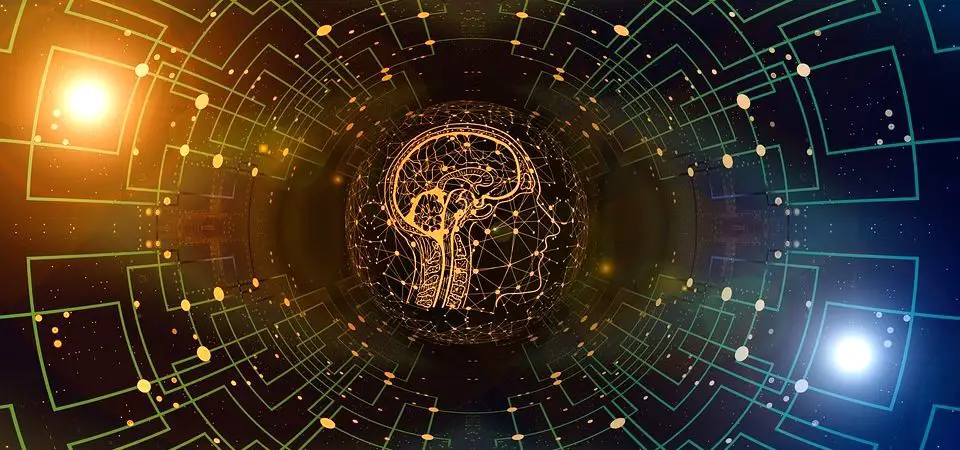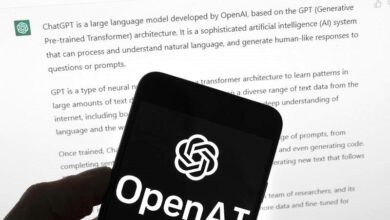Evolution of Artificial Intelligence: A Comprehensive Exploration
The Evolution of Artificial Intelligence: Past, Present & Future

Evolution of Artificial Intelligence: has rapidly evolved over the years, revolutionizing the way we live and work. From its inception to its current state, this article delves into the fascinating journey of AI. Join us as we explore its evolution through a series of detailed headings.

The Birth of Artificial Intelligence
In this section, we’ll provide a brief overview of the origins of AI, its inception, and its early goals.
The Pioneering Phase
Alan Turing’s Vision
Discover how Alan Turing’s groundbreaking work laid the foundation for AI and its theoretical underpinnings.
Dartmouth Workshop: The Birthplace of AI
Explore the pivotal role of the Dartmouth Workshop in 1956, where the term “Artificial Intelligence” was first coined.
Early AI Algorithms
Learn about the first AI algorithms and their limitations during the initial years.
The AI Winter: Challenges and Setbacks
The First AI Winter
Delve into the challenges that led to the AI winter of the 1970s and how it affected the development of AI.
Resurgence: Expert Systems and Rule-Based AI
Discover how expert systems and rule-based AI reignited interest in AI research during the 1980s.
Machine Learning Revolution
Rise of Machine Learning
Explore the emergence of machine learning algorithms and their significant impact on AI.
Neural Networks: A Game Changer
Learn how neural networks, inspired by the human brain, revolutionized AI, leading to breakthroughs in deep learning.
Big Data and AI
Understand the crucial role of big data in fueling the growth of AI, enabling more accurate predictions and decision-making.
Practical Applications
AI in Healthcare
Discover how AI is transforming the healthcare industry, from diagnosing diseases to drug discovery.
AI in Autonomous Vehicles
Explore the advancements in self-driving cars and their potential to reshape transportation.
AI in Natural Language Processing
Learn how AI has revolutionized language understanding, giving rise to virtual assistants and chatbots.
Challenges and Ethical Considerations
Bias in AI
Discuss the ethical challenges of AI, including bias in algorithms and data.
AI and Job Displacement
Examine the concerns surrounding job displacement due to automation and AI adoption.
The Future of AI
Quantum Computing and AI
Explore the potential impact of quantum computing on AI, opening up new possibilities.
AI in Creativity
Discuss AI’s role in creative fields, such as art and music, and its potential to augment human creativity.
Conclusion:
In conclusion, the evolution of artificial intelligence has been a remarkable journey, filled with challenges, breakthroughs, and ethical considerations. As AI continues to advance, it promises to shape the future in ways we can only imagine.

FAQs:
What is the history of artificial intelligence?
We’ve traced the history of AI from its inception to its current state, highlighting key milestones along the way.
How does AI impact healthcare?
AI has revolutionized healthcare by aiding in disease diagnosis, drug discovery, and personalized treatment plans.
What challenges does AI face in terms of bias?
Bias in AI algorithms and data is a significant ethical challenge that needs to be addressed to ensure fairness.
Will AI replace human jobs entirely?
While AI may automate some jobs, it will also create new opportunities and require human oversight.
What role does quantum computing play in the future of AI?
Quantum computing holds the potential to accelerate AI advancements, solving complex problems more efficiently.
What is the basic history of artificial intelligence?
The history of artificial intelligence (AI) dates back to the mid-20th century when researchers like Alan Turing and John McCarthy laid the theoretical foundations. The term “Artificial Intelligence” was coined in 1956 at the Dartmouth Workshop. Early AI focused on rule-based systems. AI development went through phases of optimism and setbacks, known as “AI winters.” The field saw a resurgence in the 1980s with expert systems. Machine learning, neural networks, and big data have since driven AI’s rapid evolution.
Is there a three-stage evolution of artificial intelligence?
Yes, AI’s evolution can be broadly categorized into three stages:
Early AI: Characterized by rule-based systems and symbolic reasoning, originating in the 1950s and 1960s.
AI Winter: Periods of reduced funding and interest due to AI’s initial limitations, notably in the 1970s.
Modern AI: Resurgence in the 1980s, marked by machine learning, neural networks, and the recent emphasis on deep learning, fueled by big data.
How quickly is AI evolving?
AI is evolving at an exceptionally rapid pace. Advances in machine learning, deep learning, and access to vast amounts of data have accelerated its development. AI technologies are continually improving and finding applications in various industries, from healthcare to finance, at an unprecedented speed.
What are the generations of artificial intelligence?
AI generations are typically classified into three phases:
First Generation AI: Symbolic AI, rule-based systems, and early expert systems in the 1950s-1960s.
Second Generation AI: The AI winter period in the 1970s-1980s, was characterized by limited progress.
Third Generation AI: Modern AI, beginning in the late 1980s with the resurgence of machine learning, neural networks, and deep learning, continues to the present day.



